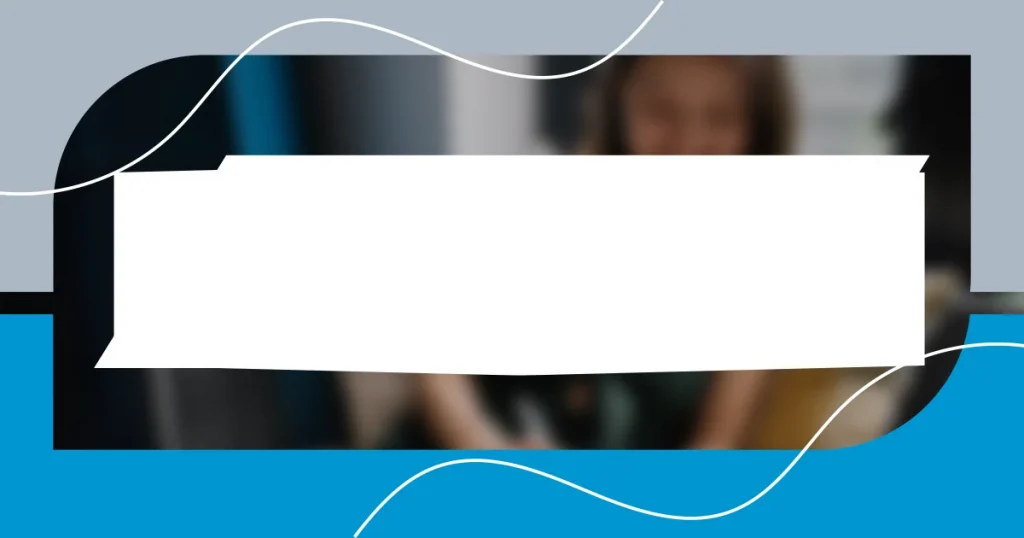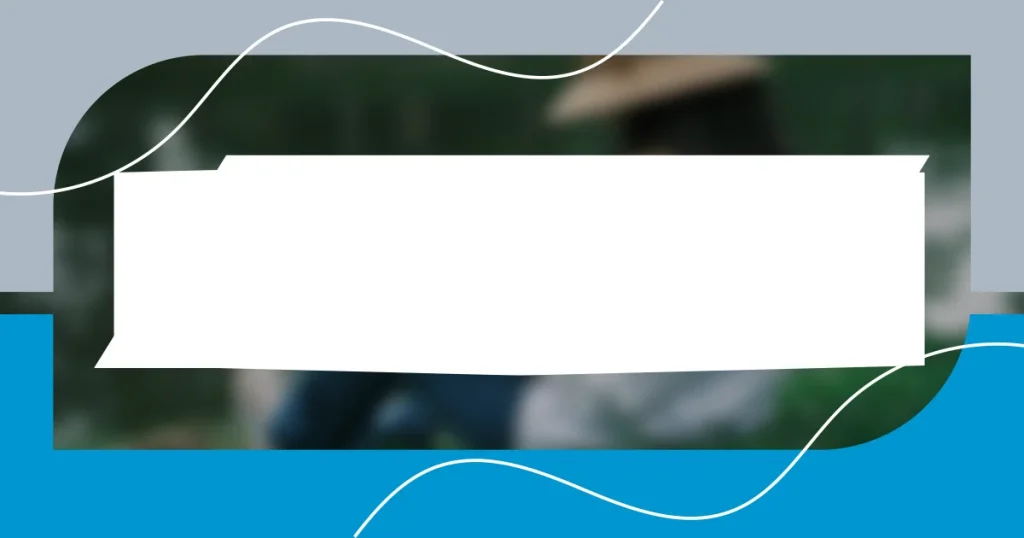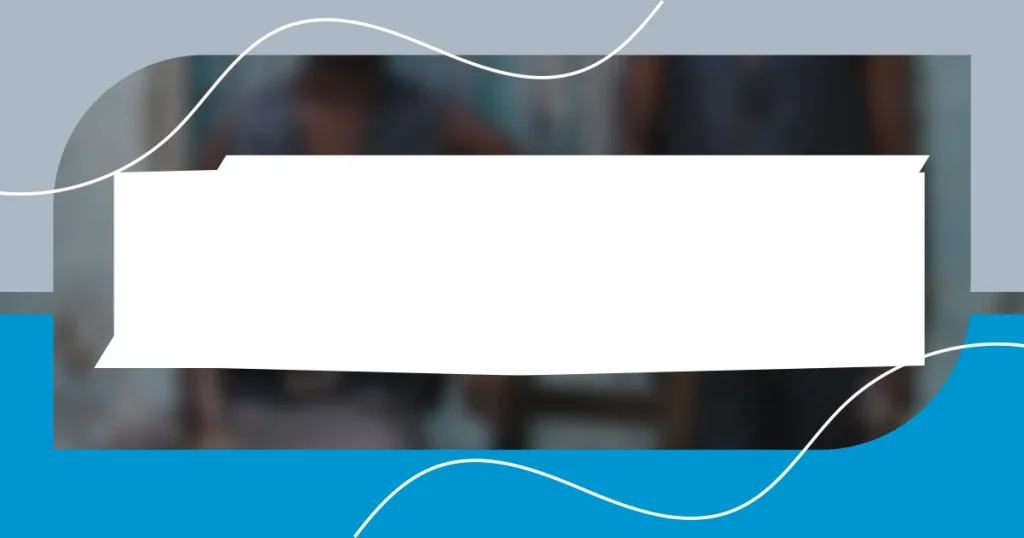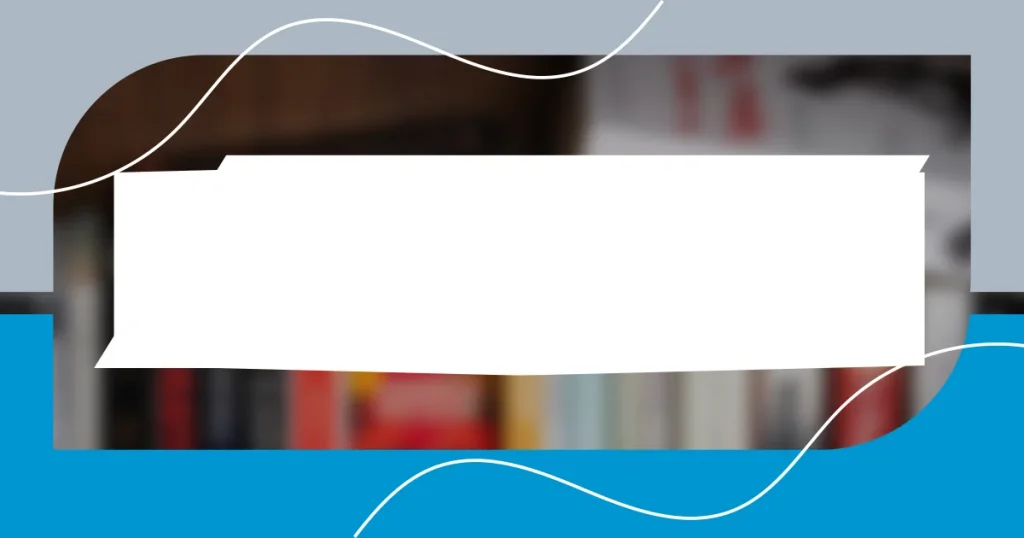Key takeaways:
- Judging criteria should balance quantitative metrics and qualitative narratives to provide a comprehensive evaluation of entries.
- Transparency in the judging process fosters trust, promotes accountability, and encourages growth among participants and judges alike.
- Best practices for submissions include clarity, alignment with criteria, and adherence to guidelines, all of which enhance the likelihood of success.
Understanding Award Judging Processes
Award judging processes can often seem like a black box to outsiders, filled with criteria that aren’t always clear. I remember the first time I sat on a panel; I felt the weight of responsibility. I found myself wondering, “What if my decision impacts someone’s career or passion project?” This thought added a layer of emotional depth to the task, making me more conscious of the choices I was about to make.
Understanding these processes starts with recognizing the criteria set by the awarding bodies, which can vary widely. Some judges rely on hard metrics, while others are swayed by emotional resonance or creativity. I’ve seen how a heartfelt story can sometimes tip the scales, much more than numbers ever could. Isn’t it fascinating how different judges may prioritize varying elements based on their unique experiences and perspectives?
Moreover, transparency is key in these processes. When judges openly share their criteria and thought processes, it builds trust with participants and helps demystify the whole experience. I recall a situation where a winner graciously accepted feedback, stating how it could help them grow. It reminded me of how crucial it is for the judging to not only be seen as an ending but as part of a learning journey. How do you think we can encourage more of this feedback culture among judges?
Criteria for Judging Awards
When considering the criteria for judging awards, it’s essential to reflect on how these guidelines truly shape the selection process. From my experience, the best award panels balance quantitative measures—like performance metrics—with qualitative factors. I once participated in a judging round for a community initiative where we weighed hard data against compelling narratives. That blend allowed us to see both the measurable impact and the emotional weight of the achievements, making our decisions feel more comprehensive and justified.
Here’s a look at some common criteria that often guide judging decisions:
- Innovation: How creative or original is the approach or solution presented?
- Impact: What is the significance of the work? How has it influenced the community or field?
- Expertise: Does the entry showcase a high level of skill and knowledge?
- Clarity: Is the presentation clear and well-organized, making it easy to comprehend the message?
- Relevance: How aligned is the entry with the award’s mission or theme?
- Sustainability: Does the work have long-term benefits or implications?
Reflecting on these criteria always reminds me of the importance of a holistic view. Each entry tells a story, and the interplay between data and narrative can be incredibly enlightening for everyone involved.
Importance of Transparency in Judging
Transparency in the judging process cannot be overstated. I still remember sitting in a dimly lit conference room, reviewing submissions, and thinking about how crucial it was for participants to understand why decisions were made. It wasn’t just about declaring winners; it was about sharing insights into our reasoning that could guide future entries. Recognizing the efforts behind each entry adds a layer of respect and appreciation for the hard work that goes into submissions.
When judges make their criteria public, it fosters an environment of trust. In one of my experiences, a participant approached me after an awards ceremony, expressing gratitude for the constructive feedback I provided. They felt more aligned with the outcome because they could see how their work was weighed against the established parameters. This openness can turn a potentially painful experience of rejection into an opportunity for growth. It’s like leaving the door slightly ajar for future dialogue; it encourages hopeful entrants to strive for excellence without feeling lost.
Moreover, transparency encourages accountability among judges themselves. I’ve seen panels where judges openly discuss their thought processes, and it encourages a more vibrant discussion. I can recall a heated conversation among judges about a particularly strong entry, with each of us presenting our perspectives on why it stood out. When we acknowledge our biases and engage in thoughtful discussions, the process becomes not just about selecting winners but fostering a community of learning. It reinforces that each judge carries their own narrative into the decision-making room, and that diversity only enhances the overall outcome.
| Aspect | Transparency in Judging |
|---|---|
| Definition | The degree to which judging criteria and processes are made clear to participants. |
| Benefits | Builds trust, fosters growth, and promotes accountability. |
| Impact on Entrants | Enables participants to learn from feedback and understand decision-making processes. |
| Judges’ Perspective | Encourages open dialogue and reflects on biases during discussions. |
Evaluating Judges’ Expertise
Evaluating judges’ expertise is crucial for ensuring a fair and meaningful judging process. From my own experiences, I’ve observed how a judge’s background and knowledge can greatly influence their evaluations. I remember sitting alongside a judge who had decades of experience in sustainable design. Their insights helped us uncover nuances in projects that might have escaped my attention, highlighting the importance of having experts who truly understand the context.
Not only does a judge’s expertise lend credibility to the process, but it also shapes how we perceive and interpret each entry. When we were deliberating on awards in a creative writing category, I found myself grappling with the technical elements of style and structure. The presence of a seasoned author on our panel was invaluable; their ability to dissect narrative techniques enriched our discussions. This made me realize that expertise isn’t just about knowing the industry—it’s about recognizing how each piece of work fits into a larger landscape.
I often ponder, how can we ensure that judges are adequately equipped to evaluate the submissions they encounter? One way is to incorporate diversity in the judging panel. By having judges from varied backgrounds and expertise, we create a more dynamic evaluation process. I recall one specific judging event where we combined tech innovators with traditional artists. Their contrasting perspectives led to an in-depth exploration of creativity that was more vibrant than I could ever have anticipated. It’s experiences like these that remind me how impactful an expert mix can be.
Insights on Fairness in Judging
Fairness in judging is a multifaceted concept that often hinges on the subjective perspectives judges bring to the table. I recall a particularly memorable judging session where we had to evaluate entries from diverse cultural backgrounds. The discussions were lively, with each judge sharing personal experiences that influenced their perceptions. This exchange highlighted how our individual narratives could shape our evaluations and made me wonder—how much do our own biases affect our sense of fairness?
In my experience, implementing a peer-review system among judges can enhance fairness. During one awards selection, we chose to let judges review each other’s assessments anonymously. The results were eye-opening. I discovered that the critiques often aligned closely with my own thoughts, which validated my perspective but also challenged me to consider different angles. This collaborative approach not only ensured that no single judge held too much sway but also opened up the judging process, making it feel like a shared journey rather than a solitary expedition.
Another important aspect of fairness is the equitable treatment of all entries. I vividly remember an awards event where an exceptionally unique entry almost got overlooked because it didn’t fit the typical mold. Thankfully, a junior judge spoke up, insisting we consider it beyond just first impressions. That moment made me realize that fairness is not just about adhering to criteria; it’s about nurturing a culture where every entry has the opportunity to shine, reminding us to look beyond the surface and appreciate creativity in all its forms. Have you ever seen something extraordinary overlooked simply because it didn’t conform to expectations? It can be a transformative moment when we choose to embrace the unexpected.
Best Practices for Award Submissions
When preparing a submission, clarity is key. I’ve often seen entries that were rich in content but hampered by vague descriptions. I remember one project that left the judges puzzled because the submission didn’t clearly outline its objectives or outcomes. Ensuring that your entry is both precise and comprehensive can make all the difference. Think about it: if you had to judge a submission, wouldn’t you want to grasp its essence quickly?
Another best practice is to tailor your submission to the specific award criteria. During my time as a judge, I’ve witnessed submissions that completely missed the mark simply because they didn’t align with what the award sought to recognize. One entrant, for example, submitted a brilliant marketing campaign for an arts award, but it lacked any artistic element, which led to its rejection. This experience really drove home the point that understanding the judging parameters is essential—after all, how can you hit a target if you don’t know where it is?
Lastly, I can’t stress enough the importance of following submission guidelines meticulously. I recall a submission that was disqualified because it exceeded the word limit by just a few sentences. It felt like a loss not only for the entrant but for the judges who missed out on evaluating a potentially great project. It begs the question: why risk the chance of dismissal over something so easily avoidable? Taking the time to read and adhere to these guidelines demonstrates professionalism and respect for the judging process.
Reflections on Improving Judging Systems
Reflecting on the processes we use for judging, I often think about the need for transparency. In one competition I was involved in, we decided to share the criteria and scoring methods with all participants beforehand. This simple act fostered a sense of trust. Entrants felt that they had a fair shot at winning, which boosted the overall enthusiasm and engagement. When participants are informed, doesn’t it make the entire process feel more credible?
Training judges can also greatly enhance the judging experience. I remember attending a workshop where we delved into cognitive biases and how they could skew our evaluations. The discussions were enlightening, leading me to reconsider my own assessments with a more critical eye. It’s fascinating—imagine if every judge underwent such training! Wouldn’t that create a healthier environment where the best work truly shines?
Moreover, I’ve seen firsthand how providing feedback to participants can truly elevate the whole process. During a recent judging panel, we made it a point to give constructive criticism to entrants, regardless of whether they won or lost. The gratitude we received was profound. Isn’t it rewarding to know that our insights might help someone grow? It’s essential to remember that judging isn’t just about selecting winners; it’s also about nurturing talent and encouraging improvement.











